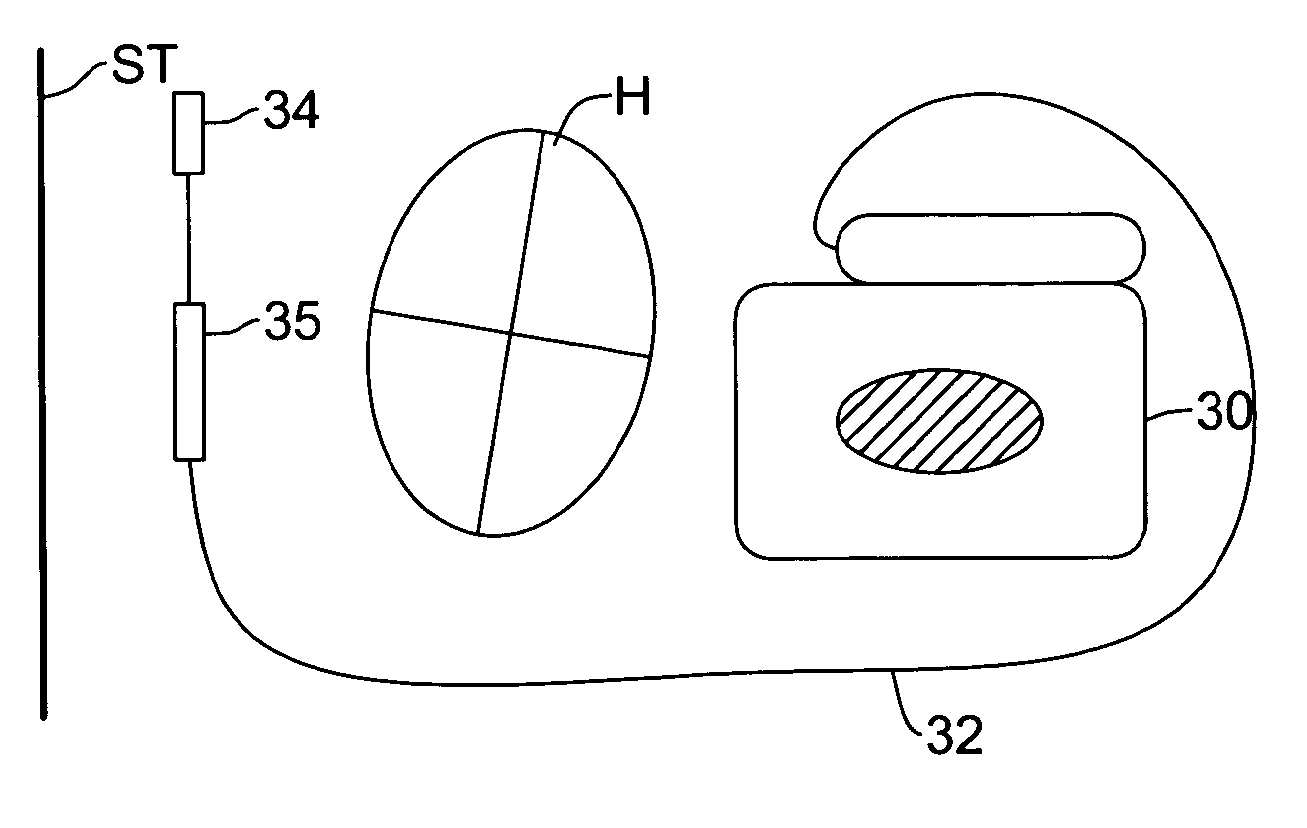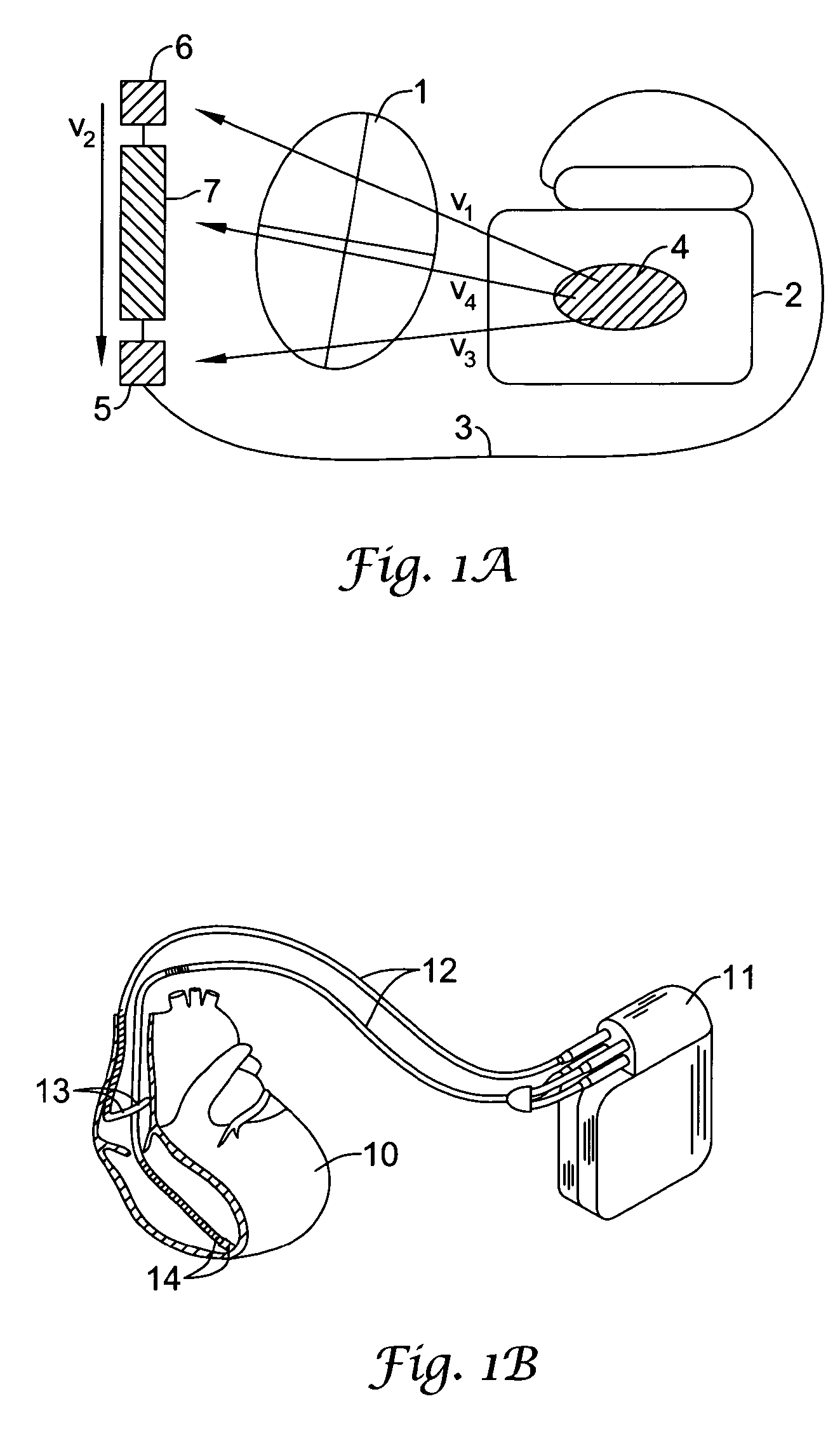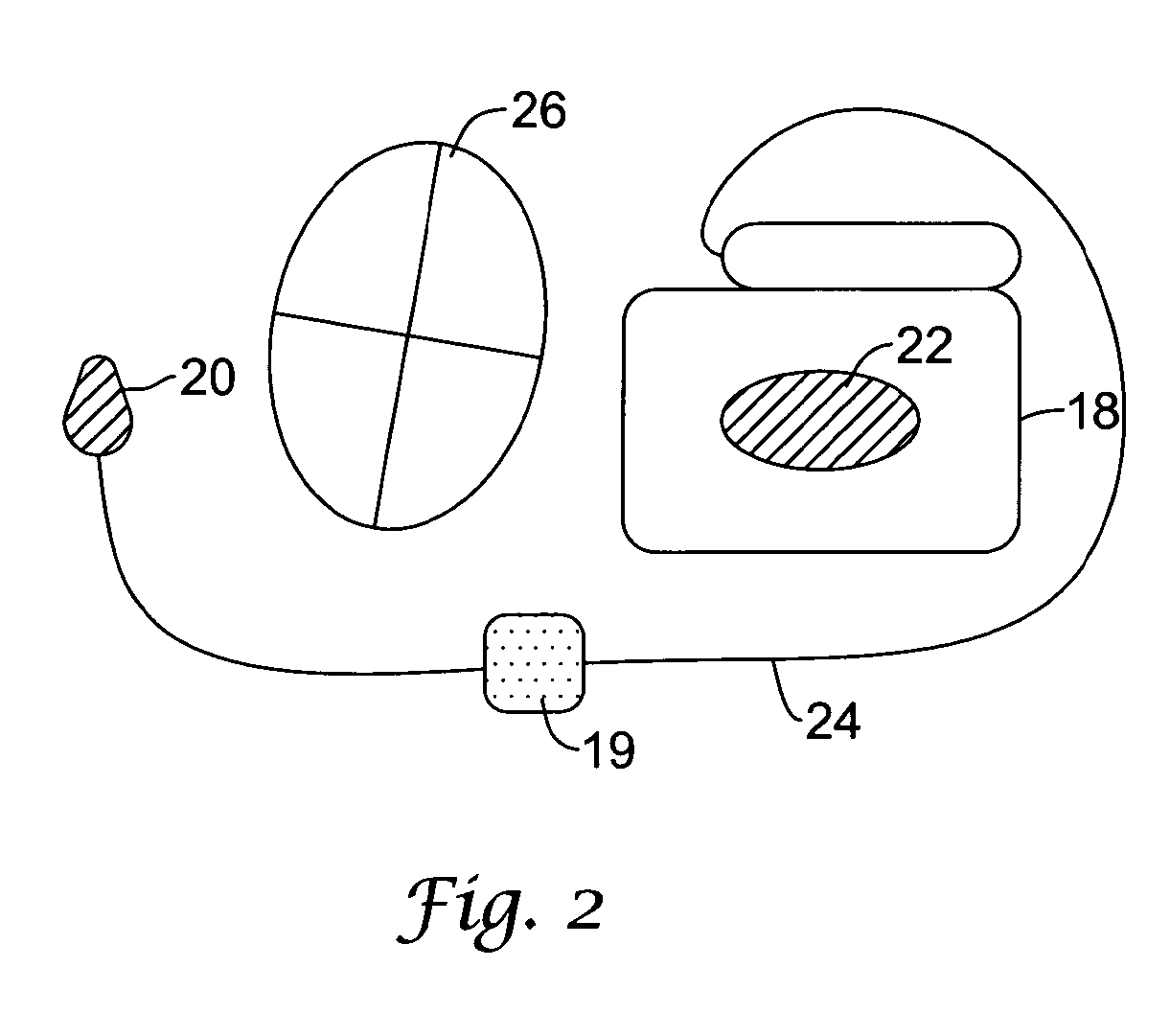Multiple electrode vectors for implantable cardiac treatment devices
a cardiac treatment device and multi-electrode technology, applied in the field of multi-electrode vectors for implantable cardiac treatment devices, can solve the problems of inconvenient use, and inability to deliver therapy, and achieve the effect of reducing ambiguity
- Summary
- Abstract
- Description
- Claims
- Application Information
AI Technical Summary
Benefits of technology
Problems solved by technology
Method used
Image
Examples
Embodiment Construction
The following detailed description should be read with reference to the Figures, in which like elements in different Figures are numbered identically. The Figures, which are not necessarily to scale, depict selected embodiments and are not intended to limit the scope of the invention. Those skilled in the art will recognize that many of the examples and elements of the examples have suitable alternatives that may be utilized.
The present invention is generally related to cardiac rhythm management devices (e.g., an Implantable Cardioverter / Defibrillator (ICD) system) that provide therapy for patients experiencing particular arrhythmias. The present invention is directed toward sensing architectures for use in cardiac rhythm management devices. In particular, the present invention is suited for ICD systems capable of detecting and defibrillating harmful arrhythmias. Although the sensing architecture is intended primarily for use in an implantable medical device that provides defibrilla...
PUM
 Login to View More
Login to View More Abstract
Description
Claims
Application Information
 Login to View More
Login to View More - R&D
- Intellectual Property
- Life Sciences
- Materials
- Tech Scout
- Unparalleled Data Quality
- Higher Quality Content
- 60% Fewer Hallucinations
Browse by: Latest US Patents, China's latest patents, Technical Efficacy Thesaurus, Application Domain, Technology Topic, Popular Technical Reports.
© 2025 PatSnap. All rights reserved.Legal|Privacy policy|Modern Slavery Act Transparency Statement|Sitemap|About US| Contact US: help@patsnap.com



